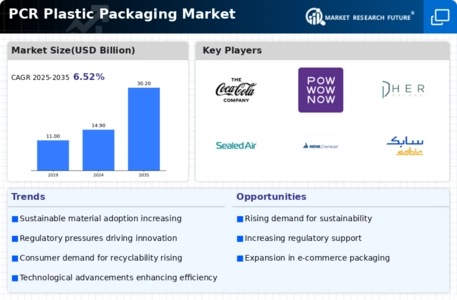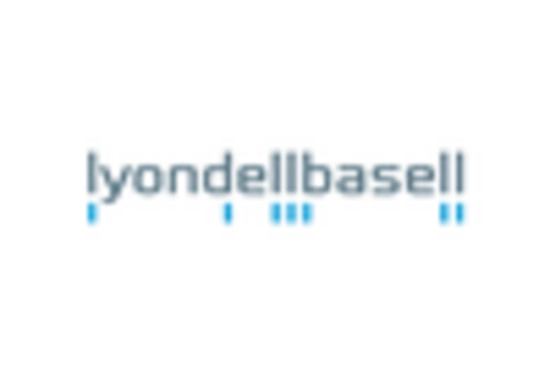Regulatory Support
Regulatory support is a significant driver for the PCR Plastic Packaging Market. Governments worldwide are enacting policies that promote the use of recycled materials in packaging, thereby creating a favorable environment for PCR plastics. In 2025, it is expected that new regulations will mandate a minimum percentage of recycled content in plastic packaging, which could lead to a 30% increase in the demand for PCR materials. These regulations are designed to combat plastic pollution and encourage manufacturers to adopt sustainable practices. Additionally, financial incentives and grants for companies investing in recycling infrastructure further bolster the market. As regulatory frameworks evolve, they are likely to play a pivotal role in shaping the future landscape of the PCR Plastic Packaging Market.
Sustainability Initiatives
The increasing emphasis on sustainability initiatives is a primary driver for the PCR Plastic Packaging Market. Companies are increasingly adopting eco-friendly practices, which include the use of post-consumer recycled (PCR) materials in packaging. This shift is driven by regulatory pressures and consumer preferences for sustainable products. In 2025, it is estimated that the demand for PCR plastic packaging will rise by approximately 20%, as businesses seek to reduce their carbon footprint and enhance their brand image. Furthermore, many governments are implementing stricter regulations on plastic waste, compelling manufacturers to innovate and incorporate recycled materials into their packaging solutions. This trend not only addresses environmental concerns but also aligns with corporate social responsibility goals, making sustainability a pivotal factor in the growth of the PCR Plastic Packaging Market.
Technological Advancements
Technological advancements play a crucial role in shaping the PCR Plastic Packaging Market. Innovations in recycling technologies and materials science have significantly improved the quality and availability of PCR plastics. For instance, advancements in sorting and processing technologies have enhanced the efficiency of recycling systems, allowing for a higher yield of quality recycled materials. In 2025, the market is projected to witness a surge in the adoption of advanced recycling techniques, which could lead to a 15% increase in the availability of PCR materials for packaging. Additionally, the development of new formulations and blends of PCR plastics is enabling manufacturers to create packaging solutions that meet specific performance criteria, thereby expanding the application range of PCR materials. This technological evolution not only supports sustainability goals but also enhances the competitiveness of the PCR Plastic Packaging Market.
Corporate Social Responsibility
Corporate social responsibility (CSR) initiatives are increasingly driving the PCR Plastic Packaging Market. Companies are recognizing the importance of integrating sustainable practices into their business models, not only to comply with regulations but also to meet consumer expectations. In 2025, it is projected that businesses prioritizing CSR will see a 20% increase in market share, as consumers gravitate towards brands that demonstrate a commitment to environmental stewardship. This trend is prompting companies to invest in sustainable packaging solutions, including the use of PCR materials. Furthermore, CSR initiatives often involve collaboration with stakeholders, including suppliers and NGOs, to enhance the overall sustainability of the supply chain. As a result, the emphasis on CSR is likely to continue driving innovation and growth within the PCR Plastic Packaging Market.
Consumer Demand for Transparency
Consumer demand for transparency is increasingly influencing the PCR Plastic Packaging Market. As consumers become more environmentally conscious, they are seeking products that provide clear information about their sustainability credentials. This trend is prompting brands to disclose the percentage of PCR content in their packaging and the environmental impact of their products. In 2025, it is anticipated that brands that effectively communicate their use of PCR materials will experience a 25% increase in consumer trust and loyalty. This shift towards transparency is not merely a marketing strategy; it reflects a broader societal expectation for accountability in corporate practices. Consequently, companies are investing in labeling and certification processes that validate their sustainability claims, thereby driving growth in the PCR Plastic Packaging Market.


















Leave a Comment